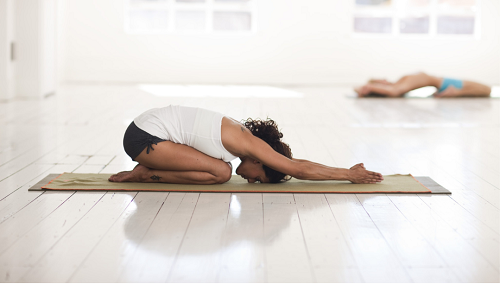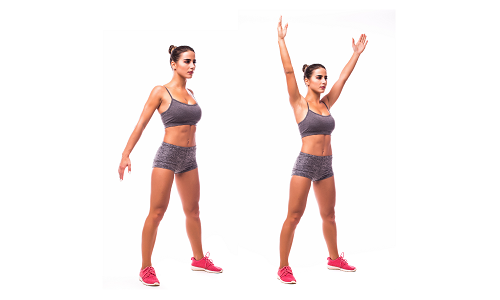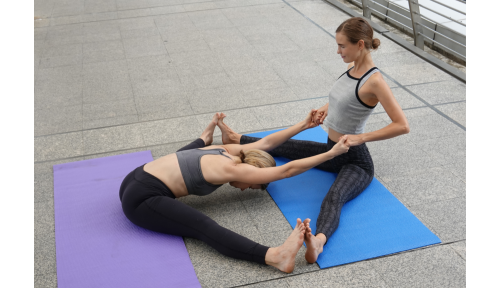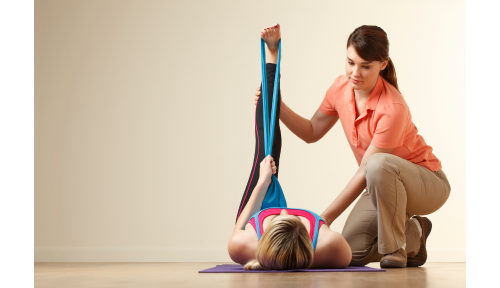What is Stretching?
Stretching is a physical exercise that requires putting a body part in a certain position that’ll serve in the lengthening and elongation of the muscle or muscle group and thus enhance its flexibility and elasticity. Stretching the muscles helps maintain range of motion in the joints to decrease stiffness and pain.
Guidelines for Stretching
Proper stretching
- Stretch the muscle in the opposite position to the tightened muscles normal actions
- Perform stretches frequently
- Encourage positions throughout the day that mimics the stretch while performing activities when feasible.
- Do not over-stretch the muscle as it may cause injury.
Preventing tightness
- Embrace an active lifestyle
- Avoid extended periods of time in the same position. Get up and move around.
- Maintain the proper ergonomic position for all activities.
Benefits of Stretching Exercises
- Increase flexibility which allows us to accomplish everyday tasks of daily living such as bending, reaching, jumping, walking, and twisting.
- Minimizes the risk of injuries.
- Increase circulation and blood flow providing working muscles with nutrients and to allow for a speedy recovery following exercise.
- Maintain a good posture to increase breathing, and have even distribution on joints.
- Allow muscles to relax, relieving tension.
Types of Stretching
There are four main types of stretching that can be done to help one’s body feel better and get rid of tightness and pain. These stretches include static stretching, dynamic stretching, passive stretching, and PNF stretching. Any type of stretching can be beneficial however some are done with a partner for a more accurate stretch. Stretching on a daily basis will have the best outcome. Static stretching will be the main focus when using Stretch With Ashlea. However, if you are interested in focusing on any of these other stretches, Stretch With Ashlea would be available for guidance.
Static Stretching

Static stretching is the most common stretch that you learned as a child in gym class. This stretch is held for a certain amount of time and position.
When performing this stretch, one must elongate the muscles to its farthest point in that position and is then held for a particular length of time. The average time a stretch is held is 30 seconds.
In most cases, this stretch is considered a safe way to elongate soft tissues for those just beginning a stretching program and for sedentary individuals.
What are the benefits?
- Static stretching has shown, through research, to improve flexibility and joint range of motion.
- This slow form of stretching will not facilitate a strong reflex response and helps in relaxation.
- Static stretching can alleviate muscle soreness.
- Stretching in a static manner is thought to be the safest way to stretch and therefore is most appropriate for a large percentage of the population.
- Stretching statically can be done individually.
- Can be done on your own.
When should I stretch?
One should take each joint through its full range of motion once a day especially those areas that are tight and stiff to prevent contractures or immobilization. However, always take precautions when needed. Check out my helpful cheat sheet to “Postpartum & Beyond: 10 Must-Know Stretching Tips for Faster Recovery“
Static stretching can be performed anytime throughout the day however make sure your muscles are somewhat warm. Post workout is the best time to perform static stretches due to muscles being warm, and ligaments and joints are more elastic. If you suffer from muscular imbalances or are interested in maintaining or increasing your flexibility, static stretches should be done daily.
Dynamic Stretching
Dynamic stretching, also known as active stretching, which involves movement of the limb through its full range of motion but not past that point. In this way we can lengthen the muscle, strengthen it in its new range, and also work on balance and coordination. It also provides a good warmup before a sport or aerobic activity. Dynamic stretching has been shown to improve performance when done before an activity that requires a lot of power, strength or speed.
All movements during a dynamic stretch are done deliberately and slowly. By performing these stretches half heartly may result in increased injuries during an activity.

What are the benefits?
- Increased power
- Increased endurance
- Improved coordination
- Muscle stretching
- Improved balance
- More efficient neuromuscular activation
- Increased speed of contraction
- Improvements in mental preparedness
When should I stretch?
It is important to start at your appropriate level of intensity. The intensity is determined by the following factors:
- the range of motion
- the speed of the movement
- the force generated during the movement
- the number of stretches
- total time stretched
Starting with a light aerobic activity for five to ten minutes each time will get blood circulating and increase your body temperature. If the intensity of stretching is increased too rapidly it increases your risk of injury.
Passive Stretching

Passive stretches are achieved through the use of mechanical devices, the assistance of gravity, a prop, or use of a partner. Passive stretching works by staying in one position for a set period of time and having relaxed (inactive) muscles while an external force is being used.
What are the benefits?
- Improve flexibility, range of motion, and mobility
- Improve your performance while lowering your risk of injury
- Assists people who may not be able to stretch on their own
- Stimulate muscle growth and prevent muscle weakness
When should I stretch?
Always after a workout is the best time to do passive stretching. When the muscles are sufficiently warmed-up, the muscle fibers are relaxed allowing for a deeper, more beneficial stretch. Take your time and stop if you feel pain.
Proprioceptive Neuromuscular Facilitation (PNF) Stretching

Human movements occur in a spiral or diagonal motions. Proprioceptive Neuromuscular Facilitation (PNF) patterns were developed in order to enhance these movements. Muscular contractions are strongest and most coordinated during these diagonal patterns of movement. These diagonal patterns involve rotation of the extremities and require core stability. The PNF patterns are Contract-Relax, Hold-Relax, and Contract-Relax-Antagonist-Contract which need assistance. Sometimes this stretch can be hard to understand when talked about so here is a quick video with some more explanation.
What are the benefits?
- Improve range of motion
- Increase muscle flexibility and strength
- Increase athletic performance after stretching
When should I stretch?
PNF stretches should be completed after exercises after the muscles, tendons, and joints are warmed up properly. Although PNF sounds like it has potential effectiveness at increasing your flexibility and range of motion, PNF stretching is not for everyone. PNF patterns usually require a partner to help perform them safely. If done incorrectly, there is a risk for muscle or joint injury. PNF stretching should not be done by children or teens since they may have a higher risk of developing tendon and connective tissue injuries.
